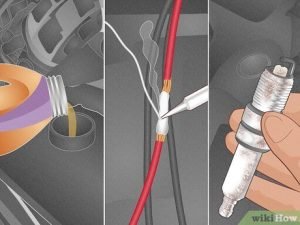If you’re experiencing a soft brake pedal, you’re not alone – it’s a common problem. One of the easiest fixes for this issue is often overlooked. Take a moment to examine the placement and function of the booster push rod (or pin) in the master cylinder. This pin extends from the booster into the piston in the back of the master cylinder.
Have you ever adjusted the distance of this pin manually? If not, it’s an essential step that could solve your soft pedal problem. Ideally, the distance between the pin and the hole in the master cylinder should be around 0.020″. If the gap is larger than this, you’ll have to overcome that distance when you first push the pedal, resulting in a soft pedal feel. If the gap is less than 0.020″, the master cylinder may not be returning the full amount, causing brake drag.
In this article, we’ll provide you with a step-by-step guide to adjusting your brake system’s push rod, from preparing your car to making the necessary adjustments. So, let’s get started!
Contents
Preparing for Brake Booster Rod Adjustment
Before starting the brake booster rod adjustment, it’s crucial to prepare your car. First, ensure that your car is in “park” or “neutral” mode. Then, set the emergency brake and lift the hood.
To guarantee your safety, disconnect the negative battery terminal to cut off the power supply to your vehicle. This step is essential, and you should never skip it.
By following these simple steps, you’ll be ready to start adjusting your brake system’s push rod safely.
Step 1: Identifying the Correct Push-Rod Length
Identifying the correct length of your push rod is an important step in brake booster rod adjustment.
If your push rod is too long, it can cause your brakes to drag, and if it’s too short, it can make noises. To ensure safe and reliable braking, you can use a push-rod checking kit or a push-rod depth gauge to identify the correct length.
Follow the instructions provided with the kit to get the accurate length of your push rod. This step will help you make the necessary adjustments to your brake system’s push rod.
Step 2: Making Adjustments to the Push Rod
Now that you have identified the correct push-rod length, it’s time to make adjustments. You’ll need to disconnect the cylinder and locate the push rod. Once you’ve located it, you can use pliers to adjust the push rod to the appropriate length. Turn the adjusting nut on the push rod inward or outward to shorten or lengthen the rod. If you can’t make adjustments onto the push rod itself, you can use a shim to shorten the rod. If the rod is already too short, remove the original shims.
Step 3: Using Shims
If you’re unable to adjust the push rod itself, using shims can be an alternative solution. Shims can be used to shorten the rod if you’re unable to make adjustments to the push rod directly. If the push rod is already too short, remove the original shims before using new ones. Make sure to adjust the shims carefully to avoid any safety hazards.
Step 4: Reconnecting the Battery Terminal and Testing the Brakes
- Reconnect the battery terminal by carefully attaching the negative cable.
- Turn on the car and test the brakes to see if the problem has been fixed.
- If the pedal feels firm and the brakes function normally, then the adjustment was successful.
- If the pedal still feels soft, then further adjustments may be necessary.
- Always prioritize safety and take your time when working on your car’s brake system.
FAQ:
Q: What is a brake booster rod adjustment?
A: Brake booster rod adjustment refers to the process of adjusting the length of the rod that connects the brake pedal to the brake booster.
Q: Why do I need to adjust the brake booster rod?
A: You may need to adjust the brake booster rod if your brakes feel spongy, if the brake pedal travels too far before engaging the brakes, or if the brakes are not working as well as they should.
Q: Can I adjust the brake booster rod myself?
A: It is possible to adjust the brake booster rod yourself if you have the necessary tools and knowledge. However, if
you are not confident in your abilities, it is best to have a professional mechanic perform the adjustment.
Q: What tools do I need to adjust the brake booster rod?
A: The tools you will need may vary depending on your specific vehicle, but you will typically need a wrench, pliers, and a brake booster adjustment tool.
Q: How do I know if the brake booster rod needs to be adjusted?
A: If you are experiencing any of the symptoms mentioned above, it may be a sign that the brake booster rod needs to be adjusted. Additionally, you can inspect the rod to see if there is any visible damage or wear.
Q: How do I adjust the brake booster rod?
A: The specific steps for adjusting the brake booster rod will depend on your vehicle, but in general, you will need to loosen the locknut, adjust the length of the rod, and then tighten the locknut.
Q: Can amisadjusted brake booster rod cause brake failure?
A: While a misadjusted brake booster rod can cause issues with brake performance, it is unlikely to cause complete brake failure. However, it is still important to address any issues with your brakes as soon as possible to ensure your safety on the road.
Conclusion:
Congratulations! You have successfully adjusted your car’s brake booster push rod. Always remember to prioritize safety when performing any repairs on your vehicle. Regularly checking and maintaining your car’s brake system is crucial to ensure that it functions properly and keeps you safe on the road. If you encounter any difficulties or have concerns, it’s best to consult with a professional mechanic.
Affiliate Disclosure: As an Amazon Associate, I earn from qualifying purchases made through links on this site.






